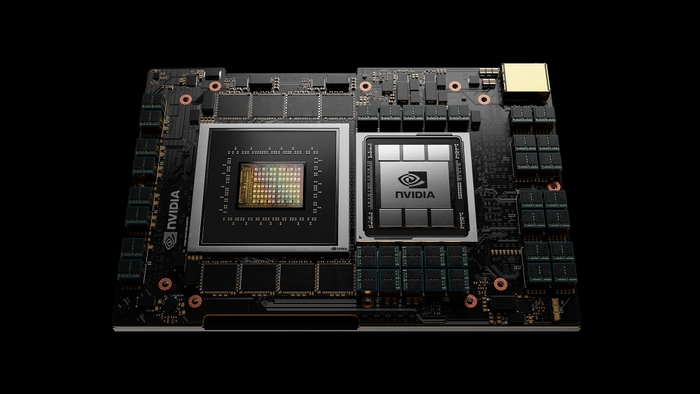Nvidia believes its Grace superchip will decimate the competition
Up to 2x the performance of Intel's Ice Lake Xeon CPUs.

During its recent GTC 2022 disclosures, NVIDIA took the wraps off of its Grace CPU, which packs 144 Arm cores into a platform that Nvidia believes is powerful enough to upend the traditional server market.
During its initial presentations, Nvidia stated that the Grace CPU could deliver 50% more performance in a SPEC benchmark than two 64-core AMD EPYC processors at half of the power consumption. Although the provided result was just one likely highly optimised benchmark, it showed that Nvidia is not messing about, and it adds a lot of context to Nvidia's attempts to buy Arm outright. Since that attempt failed, it's left the door open for others to attempt to buy Arm.
Nvidia claims the Grace CPU is set to become the fastest server processor on the market when it ships in early 2023. Big and bold claims! But given Nvidia's bullish momentum, who are we to argue. At least not until the ships are independently tested in a wide variety of benchmarks.
Since GTC, Tom's Hardware did some digging and found another result, which simulates the performance of the Grace CPU versus Intel's Ice Lake Xeon platform. If the result turns out to be accurate, even mostly accurate, then Intel and AMD are set to face some mega competition.

Best CPU for gaming: The top chips from Intel and AMD
Best gaming motherboard: The right boards
Best graphics card: Your perfect pixel-pusher awaits
Best SSD for gaming: Get into the game ahead of the rest
Tom's uncovered a benchmark comparing Grace to Intel's Ice Lake during part of a presentation by Nvidia's vice president of its Accelerated Computing business unit, Ian Buck. The Weather Research and Forecasting (WRF) model shows Grace to be twice as fast and 2.3X more energy-efficient than Intel's Ice Lake.
The Intel platform was made up of dual Xeon 8360Y 'CPUs for a total of 72 cores and 144 threads. Nvidia states the platform was pulling 572W in a 1-node configuration.
Of course, we have to be very wary of relying on vendor provided benchmarks which are often cherry picked to show off the best of a given platform. However, if these benchmarks are accurate, and can be replicated, then Nvidia is looking good to pick up a chunk of the lucrative HPC market.
Keep up to date with the most important stories and the best deals, as picked by the PC Gamer team.
Nvidia's Grace CPU Superchip is an Arm v9 based processor with 144 cores spread out over two dies fused together by a 900 GB/s NVlink. The system delivers up to 1TB/s of memory bandwidth. That's a huge number and it explains why Nvidia chose to demonstrate benchmarks that are bandwidth constrained.
Overall, Nvidia is well placed to compete in the enterprise market with Grace in the years ahead. That goes for Arm in general. However, the real competition is not the current generation, but the next. Intel's Sapphire Rapids and AMD's Genoa will be Grace's real competition.
The real question is, can future Arm processors become competitive gaming processors? If Arm processors make big strides into the high-performance computing market, maybe the gaming market is next...

Chris' gaming experiences go back to the mid-nineties when he conned his parents into buying an 'educational PC' that was conveniently overpowered to play Doom and Tie Fighter. He developed a love of extreme overclocking that destroyed his savings despite the cheaper hardware on offer via his job at a PC store. To afford more LN2 he began moonlighting as a reviewer for VR-Zone before jumping the fence to work for MSI Australia. Since then, he's gone back to journalism, enthusiastically reviewing the latest and greatest components for PC & Tech Authority, PC Powerplay and currently Australian Personal Computer magazine and PC Gamer. Chris still puts far too many hours into Borderlands 3, always striving to become a more efficient killer.

